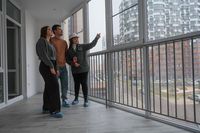VTB Bank is making significant changes to its mortgage offerings starting March 25, 2025, in response to high market interest rates and the urgent housing needs of clients. The bank plans to lower the initial payment requirements for new mortgage applications, allowing salaried clients to secure loans with as little as a 20% down payment. Previously, such clients faced a minimum down payment of 30%. Meanwhile, other borrowers will now need to provide a 30% initial payment, down from 50%.
This revamped mortgage structure applies not only to apartments but also to finished houses, parking spaces, and storage units, offering a comprehensive package for various housing needs. However, the minimum down payments for mortgages specifically for individual housing construction and commercial real estate will remain unchanged at 30% for salaried clients and 50% for others.
Sergei Babin, Head of VTB's Mortgage Lending Department, emphasized the bank's commitment to improving mortgage accessibility. He stated, "VTB strives to make mortgages more accessible even in the conditions of exorbitant market rates. We understand that the need to purchase housing often arises for clients urgently, therefore we are reducing the initial payment for them. A smaller amount of savings for the start will allow borrowers to enter into a deal faster, and they will be able to continue to increase the difference on high-yield deposits." This sentiment resonates with many individuals in the market who are dealing with fast-evolving financial circumstances.
Furthermore, VTB Bank has previously taken steps to reduce interest rates on its combined mortgages, which include loans for individual housing construction projects. Current market conditions necessitate such flexibility, and the bank has reviewed and cut interest rates on mortgage programs by 0.5% to 1%, depending on the initial payment amount. This strategic adjustment reflects an effort to make home financing more manageable in a climate where affordability is often a significant barrier to entry.
The total cost of loans now ranges from 28.949% to 37.172%, which incorporates the new rate of 29.30% per annum. This rate applies under the stipulation that customers obtain comprehensive insurance, confirm their income and employment, and meet the revised down payment criteria of 20.1% for current salaried clients and 30.1% for others. This makes the all-encompassing mortgage program more attainable for those looking to purchase both new constructions and completed homes.
The offer is particularly noteworthy for its flexibility, allowing for loan amounts up to 100 million rubles, a term length that spans from 1 to 30 years, and valid starting from March 25, 2025, through to any subsequent changes made by the bank. Clients are encouraged to assess their financial situations and risks carefully before proceeding and to familiarize themselves with all loan conditions detailed on VTB's official website.
With these changes, VTB Bank demonstrates its dedication to catering to clients' needs, particularly in urgent situations where housing purchases are concerned. The reductions in initial payments could empower clients to engage in transactions more rapidly, addressing an essential housing demand in today's market.
VTB Bank continues to emphasize its role not merely as a lender but as a partner in the journey of home ownership. Whether through providing reduced down payment options or more favorable interest rates, the bank's initiatives reflect an understanding of the hurdles many face in accessing affordable housing solutions.
As the real estate landscape evolves fiercely, institutions like VTB can help shape these developments positively. By lowering financial barriers, they not only assist individuals in achieving home ownership but also inject vitality into the broader economy—a crucial aspect to consider in a context of rising living costs and fluctuating interest rates.


